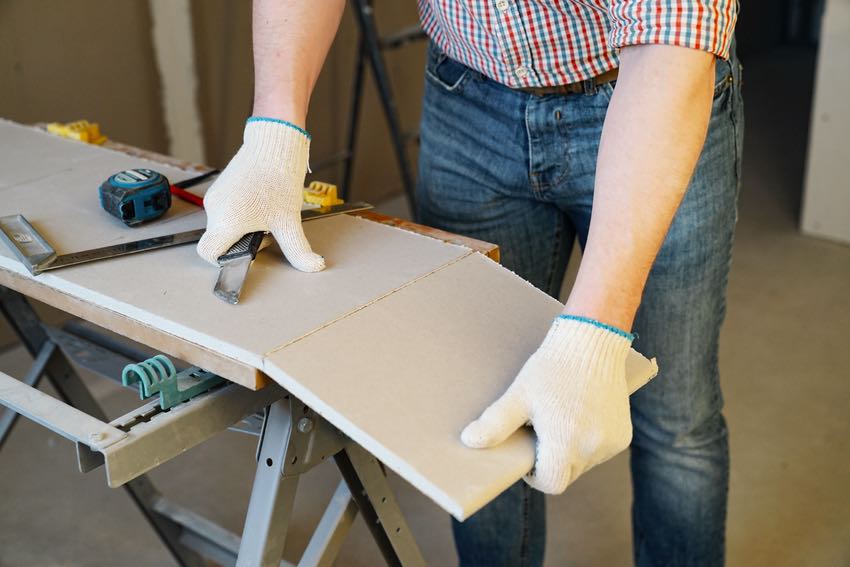If you’ve ever witnessed a professional drywaller install 10- or 12-foot-long panels on a ceiling by himself, it’s something to behold. Some may think the task is easy—but that takes oodles of talent. Most of us struggle to install even smaller drywall panels. They still weigh a lot and I find them generally unwieldy. Making cuts to drywall can be just as much of a challenge. Fortunately, many tools make that job easy. Some work better in particular applications than others. Nevertheless, here are the 7 best tools for cutting drywall according to Pros…and some you don’t.
Editor’s Note: Check out our article on the best utility knife for our top recommendations.
1. Razor Utility Knife

The most commonly used tool for cutting drywall is the razor or utility knife. You score the panel, apply some pressure, and snap! You’ve got a new, clean edge. Ok, maybe you’ll need to practice a little.
Remember that nobody leaves an exposed drywall edge in a finished project. That means your drywall cut needs to be straight—but not perfect. This should give you some confidence when lining up and making your cut. Use a straight edge or a drywall square to both mark and make your cut. The long edge helps steady the blade even through long cuts.
2. Keyhole or Jab Saw
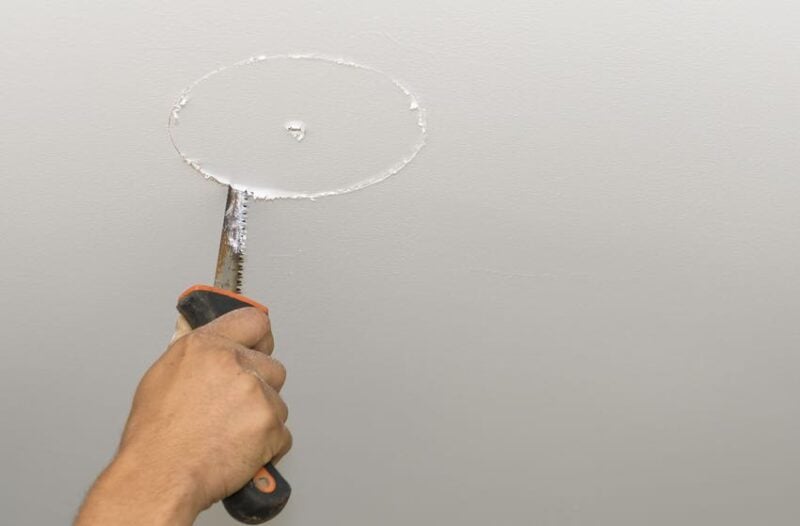
If you’re sticking with hand tools, you really want a keyhole saw. This tool has several names, including keyhole saw, drywall saw, and jab saw. Regardless of the name, this long-bladed saw lets you plunge into a drywall board and quickly cut straight or curved holes. Use this tool for cutting in outlet boxes, HVAC vents, and similar openings in drywall. We find it especially helpful when installing circular light fixtures in ceilings. For larger straight cuts in installed drywall, however, we still suggest using a power tool.
3. Reciprocating Saw with Drywall Cutting Blade
For those of us with an affinity for power tools, a reciprocating saw can help with rough-out cuts. Just make sure you have the right blade accessory. We like the Milwaukee drywall access blade and the Saf-T-Kut short drywall blade.
4. Oscillating Multi-Tool
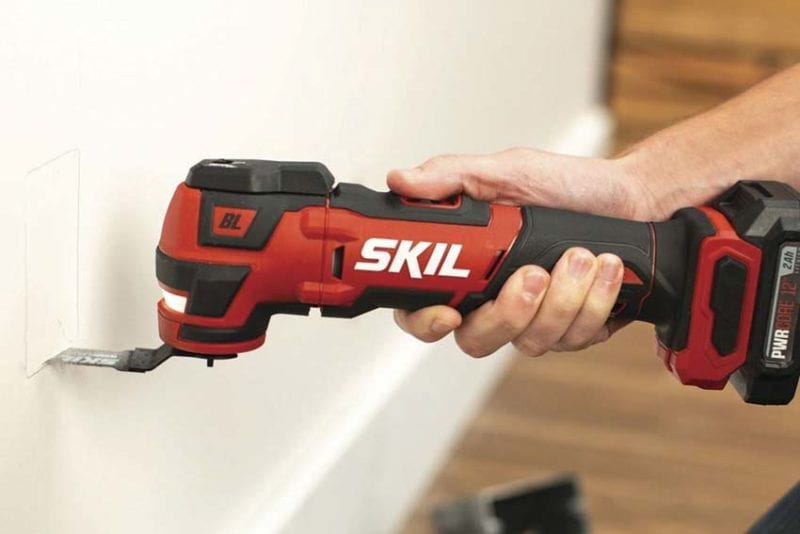
The best oscillating multi-tools give you a ton of versatility in cutting materials. It gets the job done when other tools simply can’t. All major manufacturers make them and we’re sure you can find at least 6 projects to do with it right now. It makes plunge-cutting drywall panels a breeze.
5. Spiral Saw or Rotary Saw
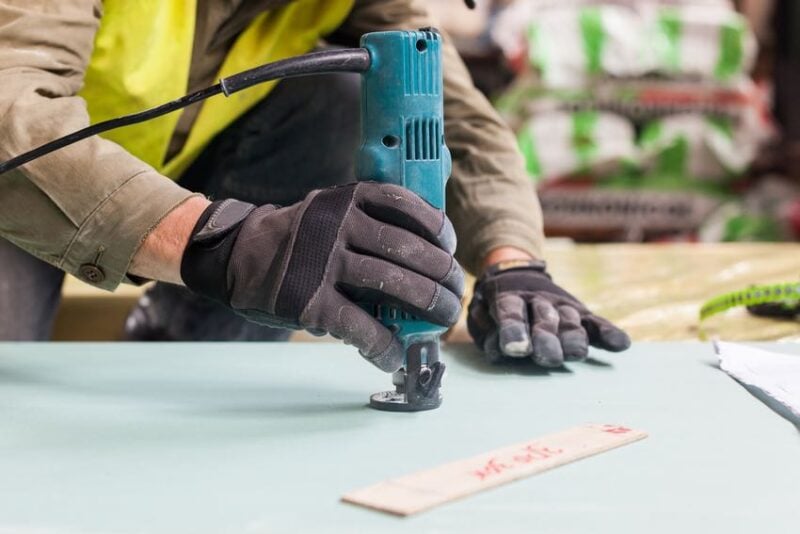
You’ll be tempted to write your name on the drywall with a spiral saw. The bit makes easy cuts in the drywall and it might be the best tool for the rough-out job. Several products exist from Dremel, DeWalt, RotoZip, and others.
6. Hole Saw
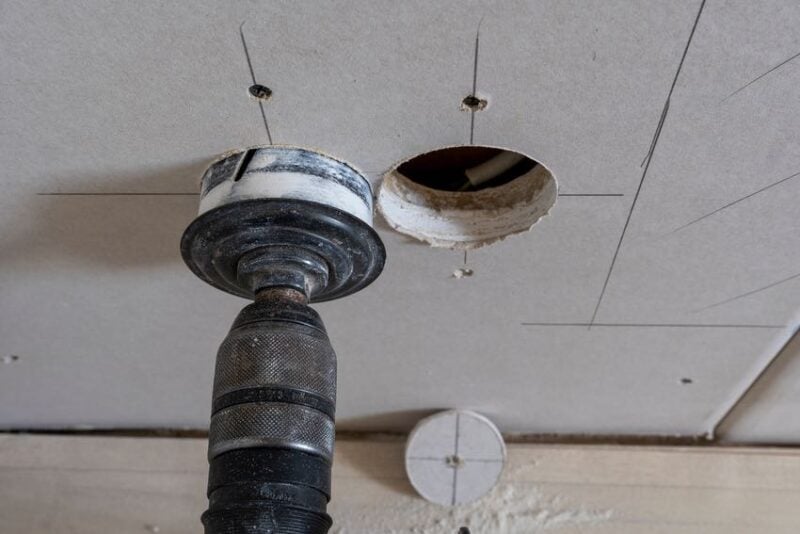
We often overlook the hole saw. If you need to make a hole in drywall for a 1-1/2-inch sink drain or a similar pipe, grab a hole saw. This tool makes quick work of drywall, and you can often get a more exact fit, leaving less room for air and water intrusion—that also means fewer bugs!
7. Track Saw With Dust Collection
This is undoubtedly a specialty tool that won’t be appropriate for everyone or every job. It’s worth considering for its accuracy, speed, and cleanliness. You’d use this if, for example, you needed to make a series of identical length cuts through multiple sheets of drywall. With the right blade, it could save you a lot of time. A traditional circular saw is a poor choice for cutting drywall because of the gypsum dust cloud created, but the dust collection feature of a track saw keeps the dust to a minimum and allows straight, accurate cuts with the guide. These haven’t gained widespread acceptance for drywall jobs quite yet, but some Pros say this method can save them a lot of time.
BONUS: 2 Tools That are NOT the Best for Cutting Drywall
We’ve given you some of the best tools for cutting drywall. Now, we want to tell you about two tools you might want to avoid—starting with this one:
Hand Saw or Back Saw
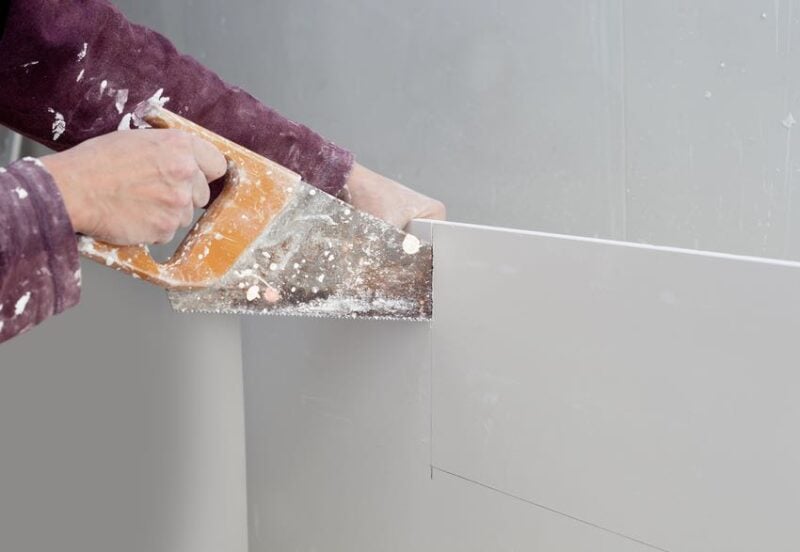
Avoid using a regular hand saw that you might use for cutting lumber or wood. While it might work, you can quickly find yourself going off-target and cutting at an angle. It also doesn’t do anything good for the teeth of this type of saw.
You may have better luck with a utility knife or an oscillating multi-tool with a half-moon drywall blade.
Angle Grinder – Not One of the Best Tools for Cutting Drywall
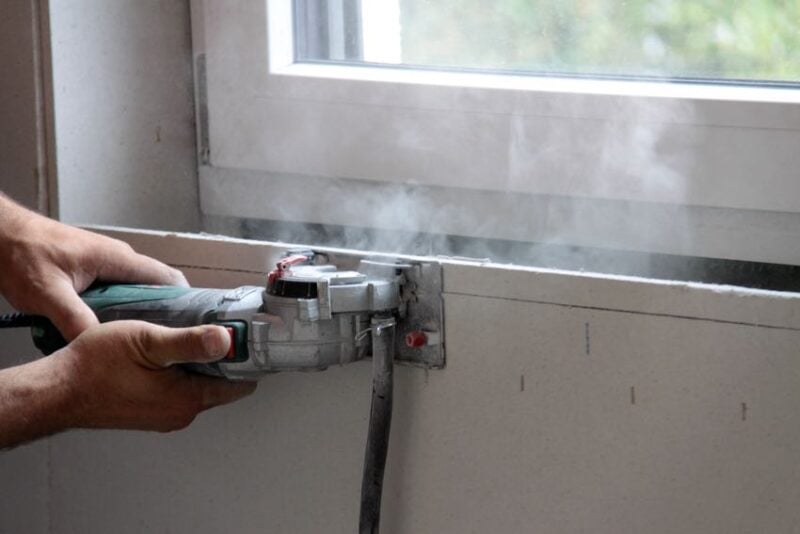
We love using angle grinders for cutting tile. When used on drywall, however, an angle grinder throws up a ton of that lighter dust that gets everywhere. It really just makes a huge mess—even when using a vacuum. Instead, grab an oscillating multi-tool with a half-moon blade and use a dust extractor or shop vac to collect the dust as it falls away from the cut. The vibrating blade generates some dust, but it doesn’t spin like an angle grinder, throwing dust everywhere. Better still, use that razor knife whenever possible—even on long straight cuts.
Final Thoughts on the Best Tools for Cutting Drywall
We hope you’ve gained some knowledge from our article on the best tools for cutting drywall. When selecting a tool, you want to understand the type (or types) of cuts you need to make. You also want to recognize how much dust the tool generates. Finally, you have to deal with what you have! While some of us enjoy the thought of a job “requiring” a new tool purchase, often you can get by with what you already have.
If you’re a Pro with some drywall-cutting tips of your own, please add them in the comments below.

